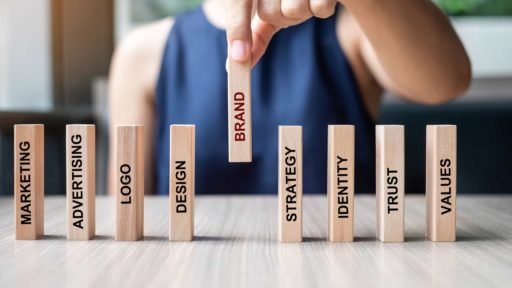Perfecting the balance of your content marketing strategy is tricky. Too much content that doesn’t relate to your product or service, and your followers are unlikely to know what you offer. Too much content that focuses solely on your product and your followers will lose interest.
An overt sales approach is never the one to take. The best promotional content is subtle. Like all things in life, right? Believe it or not, you can simultaneously engage your audience and sell your service. It’s a dream come true!
But how can you do that? We take a look at some of the best promotional content examples so you can learn how to build your plan from the experts. But first of all, let’s cover the basics and some top tips.
Key takeaways
- 70% of consumers who had an intense emotional response to an advertisement were likely to purchase their product.
- 82% of customers read online reviews. This makes case studies and user-generated content perfect for promotional content.
- Including just one clear CTA in emails boosts clicks by 371% and sales by 1617%, making them an important element to include when promoting.
- Spotify’s ‘Wrapped’ campaign grew sign-ups by 21%. Proving just how effective creative promotional content can be.
What is promotional content?
Promotional content refers to pieces of content that communicate what your brand and service can offer. This type of marketing campaign can generate brand awareness, leads, and conversions. The most common form is straightforward advertisements on TV, the internet, social media, and audio streaming apps like Spotify.
However, there are plenty of forms of promotional content that can really kickstart your business. Some of the most memorable marketing campaigns, like Nike’s ‘Just Do It’ and Coke’s ‘Share a Coke’, don’t focus on selling particular products but rather on evoking emotion. We’ll get into a few more great examples later.
Promotional content should be used alongside other types of content marketing, like standard informative and trending content. For a well-balanced strategy, the 80/20 rule is good to follow. This means only 20% of your efforts should focus on promotion, and 80% should focus on industry-related pieces like news, entertainment, blog posts, and helpful how-tos.

Why do you need to use promotional content?
It’s all well and good having a stellar content marketing strategy that attracts lots of website traffic and social media followers. But if that following doesn’t generate conversions, then your balance isn’t quite right. This is why promotional content is essential. It can:
- Increase brand awareness: An influencer may have a huge audience that you haven’t tapped into yet. If they mention your brand in a video, it’ll take your business to the next level.
- Market a new product: You’ve just created the most innovative, original product. So sit back and wait for people to discover it themselves. Just joking. Please don’t. You need to promote it and let the world know what they’re missing.
- In-depth insights into your service: The best services take a little time to wrap your head around. But don’t leave your followers guessing. Tutorials and explanation blogs can help people understand the true value of your brand.
- Convert potential customers: The more people understand, the more they’ll trust you. And this is key if you’re asking for money.
- Improve user experience: If you have great content explaining exactly what your service can do, those who are using it will undoubtedly have a better experience.

Types of promotional content
So get creative. Don’t just say what you can do in a boring ad. Use all the different types of content you can think of to create fun and engaging promotional content. Deciding on the type of content you create should consider the demographics of your target audience. Certain groups of people favor certain types of content, so be sure to do your research beforehand.
Case studies
Case studies are an opportunity to break down the customer experience with your brand and showcase the value of investing in your service. It will also give you an opportunity to address the pain points of your target audience and offer a solution. 82% of consumers read online reviews, proving just how much people trust other customers’ experiences.
This kind of content works well to promote your brand because it isn’t obviously sales focused. A case study doesn’t scream ‘buy our product!’, instead it educates and persuades potential customers in a subtle way. This is far more likely to be successful in generating conversions because people are likely to trust the content without seeing the motive behind it.
Podcasts
Everyone knows podcasts are all the rage. Everyone and their aunt either has a podcast or has been featured on one. And it’s not surprising. They are a great and engaging form of content. In our busy lives, what’s better than being able to learn whilst working, running, driving, or commuting? Podcasts are practical.
For this reason, it may not be surprising that they are a great form of promotional content. How many times have you heard someone mention in passing a new product they’re releasing or how a specific service or tool can help you? It’s all the time, and this isn’t even taking into consideration the adverts that sandwich episodes.
Whether you’re creating a podcast, featuring on one, or advertizing on one – they are extremely effective for promotion. More than 1 in 5 Americans listen to podcasts, so what are you waiting for?

Infographics
Hands up if you learn better from visual sources! Presumably, the majority of you are reading this with your hand up because 65% of people are visual learners. Our brains can process images and videos 60,000 times faster than text, which is why more and more marketers are using infographics.
These are simple graphics that summarize a lot of information in easy-to-digest points. They work well as promotional content because they can contain a lot of information about your business while also being super easy to share. They suit all kinds of platforms like social media, blogs, and forums.

Email marketing
Updating people already subscribed to your business about a new product or updated service can be great for promotion. This is because it can be automated, meaning you can create a template and send it out to hundreds or even thousands of customers directly to their inboxes.
It’s quick, easy, and effective. Brands get a whopping 42 times the amount they invest in email marketing. It’s a no-brainer! However, getting it right is important. Be sure to personalize your emails (you can still do this on automation), write attention-grabbing subject lines, and structure the text well.

Video content
Whether you’re an avid scroller on TikTok or you prefer to focus on your YouTube channel, video content is invaluable when it comes to promotion. With an audience reach of 92% worldwide, there’s no denying that your promotion strategy should include eye-catching visual content.
This kind of content offers opportunities to walk customers through the buying process or the service in fun and engaging ways. Hopping on TikTok trends makes your brand more personable while promoting your service to potentially millions of people. YouTube videos are easily shareable and can be embedded in blogs or tweets, increasing your backlinks and brand reach.

Social media posts
Webinars and white papers are all well and good. However, they are unlikely to reach new audiences. Instead, social media posts, like memes and giveaways, can attract a huge following while also converting those already interested in your brand.
Memes are simple to use, make, and distribute. They are quick to consume and easy to share, making them ideal for promotional content. Giveaways are a surefire way to grow your following and increase engagement. So focusing on social media content for your promotional digital marketing can often be the best way forward.
How to create great promotional content examples
You now know the best types of content to have your marketing team focus on. But do you know how to create high-quality content? There are a few best practices to ensure your content creation strategy is on its top game.
Set marketing goals
The key to creating great content is having clear goals to work towards. Consider the following:
- Do you want to increase brand awareness, or do you want to convert existing leads?
- Do you want to focus on attracting new customers or fostering brand loyalty?
- Is your content focused on educating followers or encouraging engagement?
- Do you want to increase brand authority or build your brand personality?
By answering these questions, the type of content you should be creating will soon become clear. By all means, you don’t have to choose between authority and personality or awareness and conversions. But clarifying your priorities will help focus your efforts. Be sure to track metrics like website traffic, click-throughs, and reach to measure your goals.

Use marketing tools
You’re not alone out there in the big bad world of marketing. There are hundreds of tools that can help you every step of the way. From scheduling and automating content to actually creating it. Check out some of the following:
- Buffer: A great scheduling tool for all of your social media channels. Create a watertight content calendar and let Buffer post on your behalf, so your promotional campaigns can be organized and scheduled months in advance.
- Canva: Easy-to-personalize templates for social media posts, infographics, and more make content creation a breeze.
- Quuu Promote: You’ve made the content, but now you want it to be seen by as many people as possible. Easy, pop it into Quuu Promote and see hundreds or even thousands of shares and likes come flooding in.

Consider user-generated content
What’s the best way to gain people’s trust? For them to hear it from the customers, not the business. It’s no secret that businesses are out to get sales and conversions. With this motive behind the content, people can find it hard to trust what you’re saying. This is why user-generated content is a great option for promotion. This can include:
- Reviews and testimonials
- Blog posts
- Video content
- Hashtag campaigns
- Surveys

Add CTAs (call-to-actions)
The best content always includes a call-to-action. This is a snappy addition that encourages people to engage with your brand. Whether that means signing up for an email subscription or commenting on a blog post. Including just one clear CTA in emails boosts clicks by 371% and sales by 1617%. You can use incentives to encourage click-throughs on almost all social channels. Here are some examples:
- “Subscribe now for 10% off your next order.”
- “Sign up for our email newsletter for regular updates.”
- “Read our most recent blog here.”
- “Give it a go by downloading our template.”

SEO-focused content
To reach your target audience, online content must take SEO (search engine optimization) into consideration. This is because search engines need to recognize that your content has value for the reader. The better your SEO, the higher you’ll be ranking on search engines.
Some key areas to keep in mind when writing content for SEO are:
- Keywords: Find out keywords that are searched for often in your industry and focus your content around them.
- Alt text: For every image or graph, be sure to add a brief description in the alt text, describing the image and its purpose. This will help make your content more accessible to those using screen readers, which search engines love!
- Word count: Word counts can change for each keyword. So take a look at the highest-ranking articles about the same topic and see how many words they are to get an idea of what you should be aiming for.
- Structure: A huge block of text is not going to encourage readers to buy your product. Break it up with bullet point lists, tables, images, and graphs.
If your promotional content ranks on the first page of Google, you’ll attract a lot more organic traffic. Only 25% of searchers progress to the second page, so you’ll be narrowing your chance of being seen without considering SEO.

Have fun and get creative
I’m sure you’re sick of seeing boring, un-inventive ads. I know I am. So don’t create them! You’ll see from the examples below that the most successful promotional content campaigns are those with original thinking behind them. Social media is an incredible platform for promotion, so get creative and see if you can go viral.
The most memorable adverts are the ones that have some kind of emotional impact. 70% of consumers who watched an advertisement that created an intense emotional response were very likely to purchase the product. Whether that’s laughing, crying, or simply feeling seen. Remember, you’re trying to appeal to fellow humans. We’re emotional creatures!
12 promotional content examples to learn from
So now you know how to create great content to promote your business. All you need is a little inspiration to kickstart your strategy. We’ve compiled a list of diverse and original promotional content examples you can learn from.
1. HubSpot’s product spotlight videos
HubSpot’s content marketing strategy is impressive. From their website, you can look at their blog, their videos, their podcasts, and their newsletters. Think of any type of content and they’ve mastered it twice over.
One of the best promotional content examples is their Product Spotlight videos on YouTube. Here, they choose a specific service or product they offer and explain it in more detail. They are engaging, informative, and persuasive. However, they don’t feel overly sales-focused. Take a look at their November 2022 video below to see what I mean.
2. LinkedIn’s Tweets
LinkedIn uses its Twitter account to remind followers of the various features it offers. It’s an example of simple, quick, and easy-to-create promotional content.
With just under 2 million, a simple Tweet like the one above can have a huge impact. It can convince people to sign up, and it can even spark interest in upgrading existing accounts.
3. Apple’s #ShotOniPhone campaign
If you want a slice of marketing-genius pie, dive into Apple’s campaigns. Their #ShotOniPhone campaign is one of the most memorable and effective promotion examples in history. In 2020, Instagram alone had over 15 million posts hashtagged with ShotOniPhone.
The idea was simple. Encourage people to share the photos they took on the new iPhone for a chance to be selected as a winner by a panel of expert photographers. The image would then be used in advertisements on billboards and TV.
The number of times I heard myself or family members saying, “surely that wasn’t taken on a phone,” was absurd. The campaign highlighted the quality of the new phones, encouraged engagement, and bombarded all social media platforms. No one could escape it. This is an example of perfect user-generated promotional content.
4. Spotify’s Wrapped
Love it or hate it, when December comes around, you can be sure to see every other person posting their Spotify Wrapped. If you’ve managed to avoid this (do you live underground?), then let’s explain. At the end of every year, Spotify compiles a fun and interactive video showing you your favorite artists, albums, and songs. Alongside this, you can see how many minutes you have spent listening and a breakdown of the genres you listen to most.
It quickly took off on social media, with users boasting about how many minutes they spend with their favorite artists. To this day, I still boast about being in the top 0.5% of listeners of The Beatles. That’s dedication.
Sign-ups for the app grew by 21% when it was introduced. You wouldn’t have associated this campaign with promotional content. But it is. It’s just clever, subtle, and creative.

5. Small Business Trend on TikTok
An example of the perfect trend to jump on if you’re just setting up is the small business trend on TikTok. This saw thousands of videos with millions of views, each documenting life as a small business owner. From how they created their products to dealing with customer reviews and packing orders.
This trend shed light on thousands of up-and-coming brands and encouraged people to opt for smaller businesses rather than global conglomerates like Amazon.
6. JD Sports and Nike membership competition
By teaming up together, they both received more memberships. The terms and conditions stated that you had to connect your JD Sports account to your Nike account. This means both companies would have received an increase in subscriptions.
It’s a small ask to be in for a chance to see Chicago Bulls vs Detroit Pistons in Paris. This is a great example of promotional content because it attracts its target audience. Those who are likely to be interested in basketball are also likely to use the products that both JD Sports and Nike sell. This means once these people sign up, they’re likely to also purchase your products in the future.
7. Dove ‘Real Beauty’ campaign
After research showed that only 2% of women feel beautiful, Dove launched its ‘Real Beauty’ campaign, which swapped models for real women in their advertisements. However, they went further than this. They promised to:
- Reflect diversity so more women felt represented.
- Never digitally distort images of women.
- Create the Dove Self-Esteem Project aimed at young girls.
This obviously appealed to the target audience. The campaign created a brand persona that respected women and focused on natural beauty. This was and still is refreshing to see. It elicited an emotional response and went viral. Despite it starting in 2004, to this day, it continues. And Dove continues to be associated with representing all kinds of women, ensuring brand loyalty.
8. Wendy’s meme use
American fast-food chain Wendy’s has a notorious Twitter account. Their use of humor has garnered a cult following. Despite it not seeming directly promotional, the content has helped the business pitch itself against their competitors.
The memes often focus on the flaws of other similar businesses, meaning their followers are more likely to choose Wendy’s. They also use them to promote more products. Having such a strong brand personality also draws in more followers, meaning more brand awareness and more customers.
9. SHEIN influencer marketing
Whether they’re a morally good company or not, SHEIN knows how to use influencer marketing. So much so that ‘SHEIN hauls’ turned into a TikTok trend. That’s right, they now have free influencer marketing for the foreseeable future.
This promotional content strategy has been incredibly successful, building a following of 61.5 million followers across 5 social media platforms. They have targeted their audience on TikTok in particular, with the hashtag #SHEIN having over 30 billion views. This is a mindblowing statistic.
Check out an example of the trend below. But don’t worry, you don’t have to watch the full 26 minutes.
10. Always #LikeAGirl
Period product company, Always, released an ad campaign that focused on redefining the belittling phrase “like a girl”. Part of the campaign was to interview people about what it meant to do something like a girl as part of a social experiment.
It was obvious this campaign was going to be a smash. The emotional response from women all around the world was huge. The feeling of sexism finally being called out was a significant moment. If it feels like a company respects you and reflects who you are, then you’re more likely to choose them over competitors.
11. Metro Trains Melbourne’s “Dumb Ways to Die”
Remember that god-awful but ridiculously catchy tune that went viral in 2012? If not, it was a little cartoon video with a song about all the dumb ways you can die. It was everywhere. The internet, radio, TV, even iTunes!
This was actually created by Australian company Metro Trains Melbourne to prevent people from messing around and falling on the train tracks.
Just when you thought there couldn’t be any more ways to promote your business, silly songs come along. But why not, hey? It did the trick!
12. Nike’s #JustDoIt campaign
It’s rare an advert or a piece of promotional content can actually improve your life. However, Nike’s #JustDoIt campaign did just that. Rather than actively selling their products or telling you what you need to exercise, they were simply promoting a healthy lifestyle.
Active lifestyle influencers clocked on to the hashtag, and it soon spread like wildfire through social media platforms, the internet, and TV. People enjoyed it because it was a non-judgemental encouragement to get outside. The world of exercise can be intimidating. But Nike removed this element, making people opt for their brand over others.
Conclusion
Successful content marketing doesn’t have to be in-your-face ads and boring product promotions. All of these promotional content examples should prove that the most innovative and original concepts are the most successful. Yes, this may take a little extra work. But all the best things in life do.
There are also plenty of tools out there to make your marketing efforts a little less stressful. These mostly deal with the distribution side of things rather than the creation. (Because you can’t buy ideas!)
So, choose the type of promotional content that best suits your audience and business. Follow our tips on how to create great content. And check out our best examples for inspiration. You’ll have a successful promotion strategy in no time!
Have you already started a promotional campaign? How did it go? If it wasn’t as successful as you hoped, be sure to follow all of our top tips.





